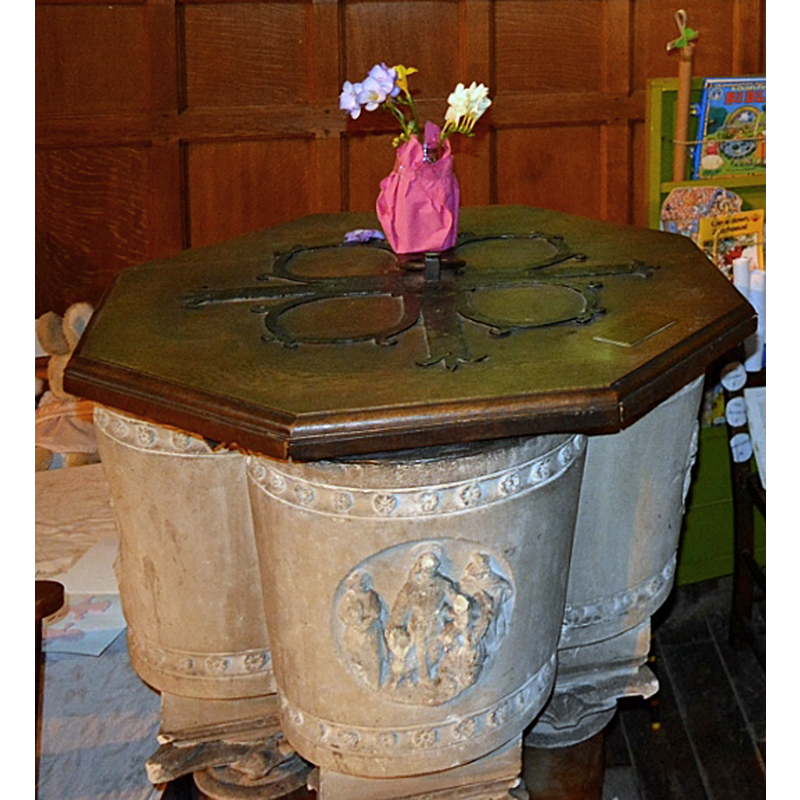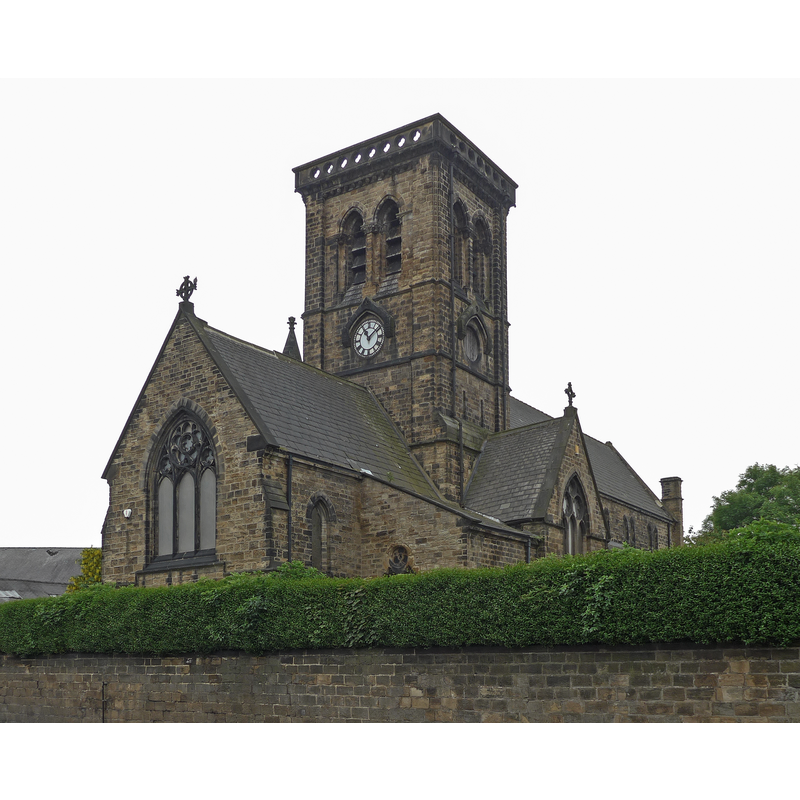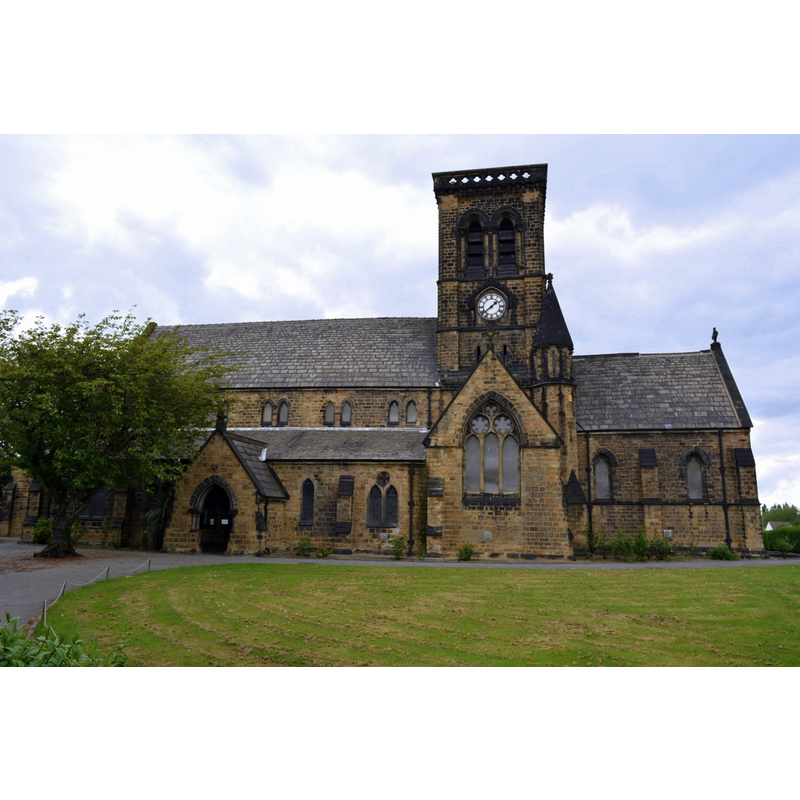Castleford

Image copyright © Mark Stevenson, 2016
CC-BY-SA-2.0
Results: 12 records
view of basin - upper view
view of basin and cover
view of church exterior
view of church exterior - northeast view
view of church exterior - south view
Scene Description: Source caption: "All Saints, Church Street, Castleford. The first mention of Castleford Parish Church is in surviving sources between 1178 and 1184 when Henry II confirms the grant by Henry de Lacy to the hospital of St Lazarus in Jerusalem, linking the town with the exotic and expressionist age of the Crusades. The benefaction failed to take place and the patronage remained with Lacy successors Some 200 years later it was restored by John of Gaunt, the Duke of Lancaster around 1370. Another restoration took place between 1866 and 1868, the cost being met by public subscription and what was to be the last Church Rate levied on the district."
Copyright Statement: Image copyright © Mark Stevenson, 2016
Image Source: digital photograph taken 24 May 2016 by Mark Stevenson [www.geograph.org.uk/photo/4964973] [accessed 16 October 2018]
Copyright Instructions: CC-BY-SA-2.0
view of font
Scene Description: "The font is in three sections, a bowl, stem and plinth, each of which may be of medieval origin." (CRSBI 2018) [cf. FontNotes]
Copyright Statement: Image copyright © CRSBI, 2018
Image Source: digital image of a B&W photograph by John McElheran [www.crsbi.ac.uk/site/2162/] [accessed 16 October 2018]
Copyright Instructions: PERMISSION NOT AVAILABLE -- IMAGE NOT FOR PUBLIC USE
view of font
Scene Description: "The font is in three sections, a bowl, stem and plinth, each of which may be of medieval origin." (CRSBI 2018) [cf. FontNotes]
Copyright Statement: Image copyright © CRSBI, 2018
Image Source: digital image of a B&W photograph by John McElheran [www.crsbi.ac.uk/site/2162/] [accessed 16 October 2018]
Copyright Instructions: PERMISSION NOT AVAILABLE -- IMAGE NOT FOR PUBLIC USE
view of font
view of font
view of font in context
view of font in context
view of font in context
INFORMATION
FontID: 13923CAS
Object Type: Baptismal Font1
Church/Chapel: Parish Church of All Saints
Church Patron Saints: All Saints
Church Location: address & coordinates are for Castleford All Saints': Church Street, Castleford, Wakefield WF10 1ES, UK [address for Glasshoughton St Paul's: Pontefract Rd, Glasshoughton, Castleford WF10 4BL, UK -- Tel.: 01977 529929]
Country Name: England
Location: West Yorkshire, Yorkshire and the Humber
Directions to Site: Located off the B6421, N of the A639, 5-6 km NW of Pontefract [Glass Houghton is in the civil parish of Castleford, about 3 km from Pontefract]
Ecclesiastic Region: Diocese of York [formerly Wakefield]
Historical Region: wapentake of Osgoldcross, liberty of Pontefract
Font Location in Church: [cf. FontNotes]
Century and Period: 12th century, Late Norman
Font Notes:
Click to view
No individual entry found for Castleford in the Domesday survey. Glynne's 10 May 1862 visit to this church (in Butler, 2007) reports: "The font has an early circular bowl, upon a square stem, to which four slabs are attached, and upon a plinth." [NB: Butler (ibid.) footnotes Glynne's notes: "The font is now in St. Michael, Glass Houghton." Ryder (1993) reports a "much scraped font, probably 12th century, now in the 20th century church at Glasshoughton." The CRSBI (2018) entry for this church quotes Ryder's information. The CRSBI (2018) entry for Glasshoughton St Paul's notes: "A medieval font from Castleford can be found in the plain interior, set in the N aisle near the E end. The font is recorded as coming from All Saints church at Castleford. [...] The font was seen at Castleford by Sir Stephen Glynne in 1862. He described it as having an early circular bowl and a square stem to which four shafts were attached, and a plinth. (Butler 2007, 139). [...] It is not known when the font came to Glasshoughton, but probably in 1902 when the church was built, or in 1923 when it became an independent parish.[...] The font is in three sections, a bowl, stem and plinth, each of which may be of medieval origin. Surfaces are smooth and show no tooling, but the general form suggests that the bowl and stem, at least, could be 12thc. The stone used is slightly different in each section: the stem, or support of the bowl, is in a fine-grained light pink sandstone; whereas a moderately coarse sandstone, medium pink, slightly banded, and with occasional iron spots, was used for the bowl. The plain and square plinth has been coated with a plaster or cement to even out damage. The flat-topped stem has a square core with integral shafts of three-quarter section on the angles. The squat rounded bowl has four rounded stubs that fit the columns. The top is smoothly rounded; the rim reworked, and a slight horizontal facet can be seen in some lights, which could have taken the wooden lid without a rebate; there is no mark of any fitting for a medieval locking device. The basin has been filled in modern times to make a shallow saucer for water. Although it seems that the font was in use at Castleford in 1862, or at least inside the church, before it was sent to Glasshoughton, it is said to have been outside and used as a bird bath. This would account for the shallow bowl, and the lack of a drainage hole. The draining pipe now on the N side of the font is no longer functional. [...] Ryder thinks the font is much re-tooled and possibly 12thc. (Ryder, 1993, 10). The four angles with integral columns recall the font at Reighton (YE), probably first half of 12thc. A font at Great Driffield (YE) has a central pillar and four smaller shafts with waterleaf capitals. The font in Lincoln cathedral also has this type of structure, as does the lead font at East Meon (Hants).. There is no distinct style in the four irregular stubs, and they have probably been reworked. (Fieldworker). Because of the complex structure of the font, with four shafts around a central pillar, and stubs of capitals on the bowl, it seems to be originally Romanesque, but major reworking has been done, chiefly around the rim, which has no rebate for a lid or lead, and no sign of a hinge and hoop for a padlock. All historical accidents have been reduced to an acceptable smoothness, which may be dated to the 'bird bath' period."
COORDINATES
Church Latitude & Longitude Decimal: 53.722, -1.364
Church Latitude & Longitude DMS: 53° 43′ 19.2″ N, 1° 21′ 50.4″ W
UTM: 30U 607948 5953835
MEDIUM AND MEASUREMENTS
Material: stone, [cf. FontNotes]
Number of Pieces: [cf. FontNotes]
Font Shape: round (mounted)
Basin Interior Shape: round
Basin Exterior Shape: round
Diameter (inside rim): 57.5 cm*
Diameter (includes rim): 63 cm*
Basin Total Height: 39.5 cm*
Height of Base: 64 cm*
Font Height (with Plinth): 103.5 cm*
Notes on Measurements: * CRSBI (2018)
LID INFORMATION
Date: modern
Material: wood, oak?
Apparatus: no
Notes: round and flat; modern
REFERENCES
Corpus of Romanesque Sculpture in Britain and Ireland, The Corpus of Romanesque Sculpture in Britain and Ireland, The Corpus of Romanesque Sculpture in Britain and Ireland. Accessed: 2018-10-16 00:00:00. URL: http://www.crsbi.ac.uk.
Corpus of Romanesque Sculpture in Britain and Ireland, The Corpus of Romanesque Sculpture in Britain and Ireland, The Corpus of Romanesque Sculpture in Britain and Ireland. Accessed: 2018-10-16 00:00:00. URL: http://www.crsbi.ac.uk.
Glynne, Stephen Richard, The Yorkshire notes of Sir Stephen Glynne (1825-1874), Woodbridge: The Boydell Press; Yorkshire Archaeological Society, 2007
Ryder, Peter, Medieval churches of West Yorkshire, [Leeds?]: West Yorkshire Archaeology Service, 1993



